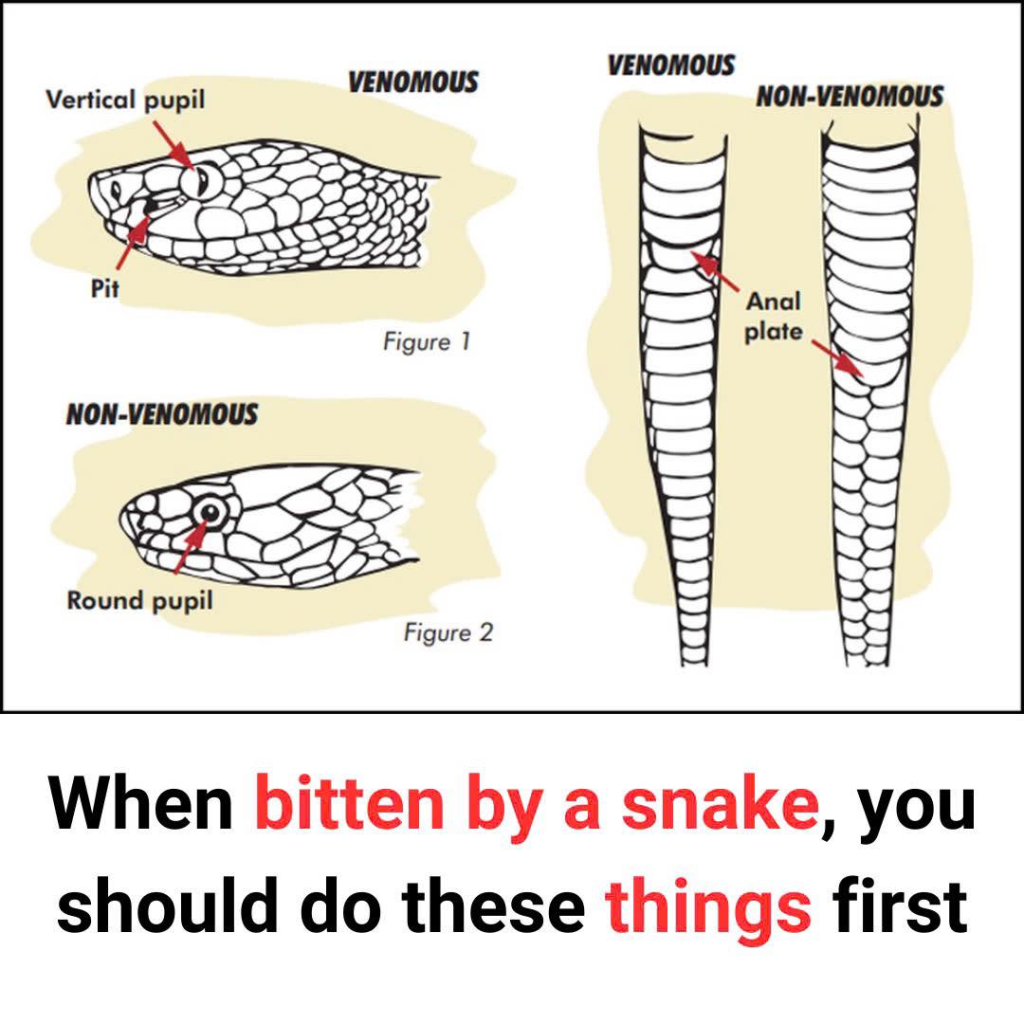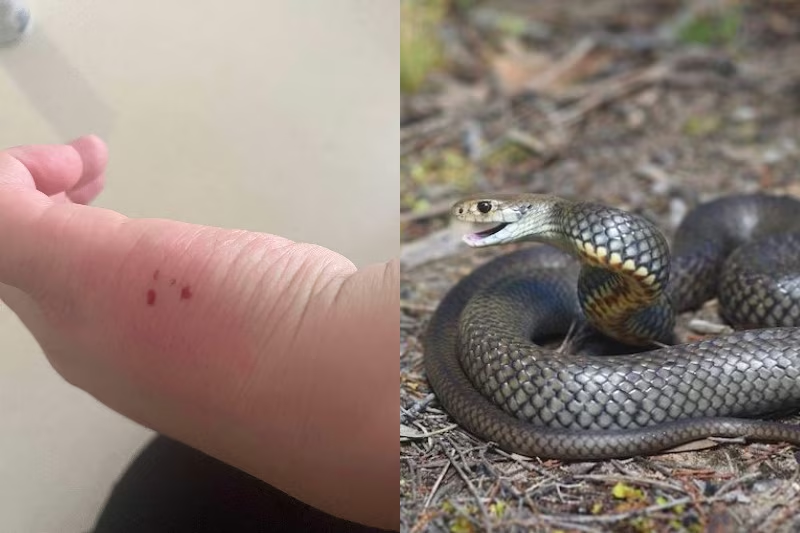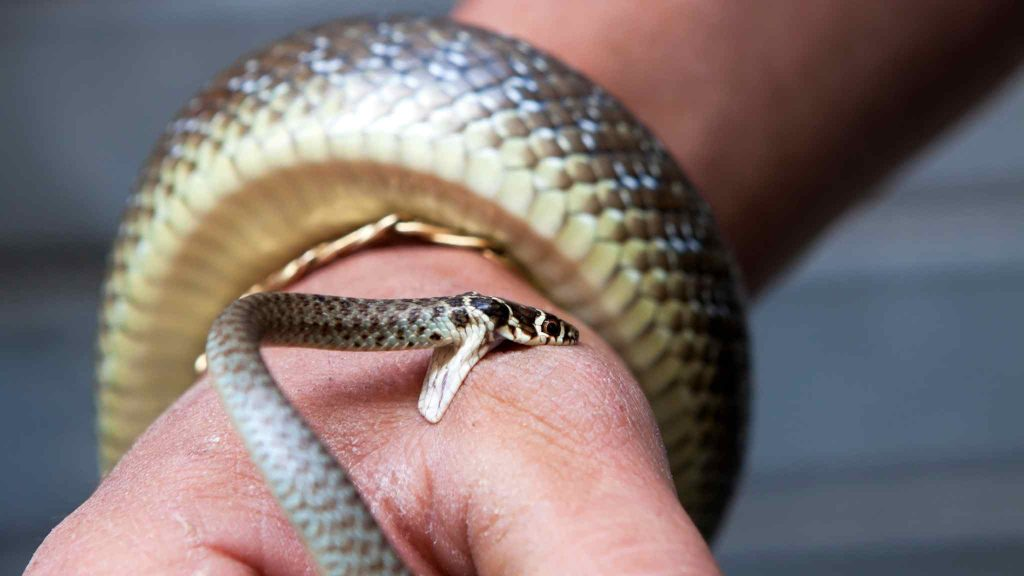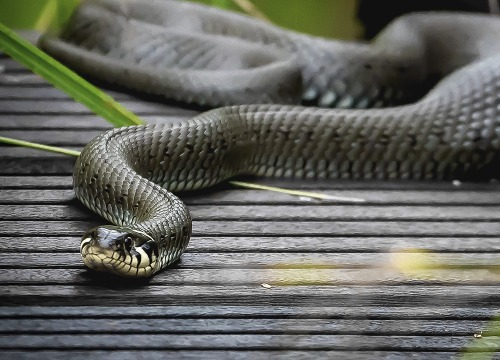A snake bite can send anyone into full panic mode. But here’s the truth — what you do in the first few moments matters more than you think. Whether you’re on a trail in the woods, working in your backyard, or just walking through tall grass, being prepared could literally save your life.
So if a snake ever bites you or someone nearby, don’t freeze. Don’t panic. Instead, remember this: staying calm and making smart, fast decisions is your best defense. Let’s talk about what you need to do immediately, how to tell if the snake was venomous, and what mistakes to avoid.

How to Recognize a Venomous Snake Bite
First things first — not all snake bites are venomous. Knowing the signs can help you act appropriately. You may not always see the snake clearly, but these symptoms can give you important clues:
- Venomous bites usually cause intense pain, swelling, bruising, and even numbness or tingling near the wound. You might also feel dizzy, nauseated, or have trouble breathing.
- Non-venomous bites are often less dramatic. You’ll usually see a few small punctures or shallow teeth marks, minimal swelling, and mild discomfort.
If the snake is still nearby, do not try to catch it. Don’t reach for your phone to take a picture either. Just step away carefully. If you can safely remember what it looked like — color, shape, or pattern — that’s great. But never put yourself in more danger.
Video: Learn first aid gestures: Snake Bite
Step 1: Stay Calm and Still
As hard as it may be, staying calm is the most important thing. When you panic, your heart rate spikes, which spreads venom through your bloodstream faster. Try to breathe slowly and evenly. Sit or lie down if you feel dizzy.
Limit your movement as much as possible. The goal is to keep the venom localized. If you were bitten on your leg, avoid walking. If it’s your arm, keep it at or slightly below heart level.
Step 2: Call Emergency Services Immediately
Call 911 or your country’s local emergency number right away. Tell them you’ve been bitten by a snake and your location. Time is everything, especially if the snake was venomous.
If you’re in a remote area and can’t get cell service, send someone for help or use a satellite device if you have one. Don’t wait to see how bad it gets. Just make the call.
Step 3: Remove Tight Items and Stay Comfortable

Remove rings, watches, bracelets, or anything that could become tight as the area swells. Swelling can happen quickly, and you don’t want something cutting off circulation.
Loosen clothing near the bite and try to stay still while you wait for help. If you have a clean cloth, lightly cover the bite to protect it from dirt and bacteria — but don’t wrap it too tight. You’re not trying to cut off blood flow.
Step 4: Do NOT Do These Things (Seriously, Don’t)
Some snake bite myths are not only outdated — they’re dangerous. Let’s bust them now:
- Don’t suck the venom out. It doesn’t work and can make things worse.
- Don’t cut the wound. You’ll just injure yourself more.
- Don’t apply ice. It won’t help and may damage skin tissue.
- Don’t use a tourniquet. This can cause more harm by cutting off blood flow.
- Don’t drink alcohol or caffeine. They can speed up venom absorption.
Stick to the basics: stay calm, get help, and let the professionals handle it.
What to Expect at the Hospital

Once you’re in medical care, doctors may administer antivenom if it’s determined the bite was venomous. They’ll also monitor your vital signs, manage pain, and prevent infection. Some bites heal quickly with minimal issues. Others may require a longer recovery and wound care.
Getting medical treatment as soon as possible increases the odds of full recovery. Delays can lead to tissue damage or complications, even if the venom itself isn’t deadly.
Knowing Your Local Wildlife Can Save Lives
It helps to know what kinds of snakes live in your area. In the U.S., venomous snakes include rattlesnakes, copperheads, cottonmouths (water moccasins), and coral snakes. In other countries, different species pose different threats.
When you’re out in nature, wear boots, avoid tall grass when possible, and don’t stick your hands into holes or under rocks. Prevention is always better than emergency response.
Conclusion: Your Calm Could Save a Life

A snake bite is scary, but it’s not a death sentence — especially if you know what to do. Staying calm, calling for help, avoiding harmful myths, and limiting movement are the smartest steps you can take. With the right response, most people recover just fine.
So the next time you’re exploring the outdoors or working in snake territory, keep this guide in mind. It’s better to know it and never need it than to need it and not know it.


